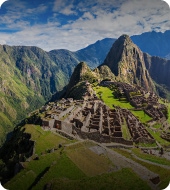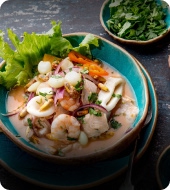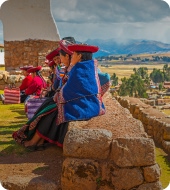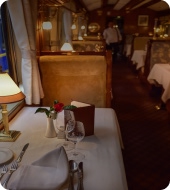
Lake Titicaca-Uros, Taquile and Luquina
Written by:Valencia Travel
Last Update: 2025-01-22
Some of our travelers ask us what makes Lake Titicaca so unique. Is it worth including Titicaca on a trip to Peru? The fact that this massive lake, shared by Peru and Bolivia, is the highest navigable lake in the world contributes to its popularity. Lying at 3,810 m above sea level in the Andes, it is recommendable to visit after other high-altitude cities such as Cusco to witness mind-blowing landscapes that you can see from the shores, the lake’s immensity, the azure colored water contrasting with the Andean mountains, and the clearest of blue skies are just some of the great reasons to visit Lake Titicaca.
Lake Titicaca
Floating islands of Uros
First, we visit the home of one of the fascinating indigenous groups on the continent, the floating islands of Uros. The Uros people are descendants of one of the oldest cultures in South America, and these floating islands are a highlight of any South American itinerary. 1,200 Uros still live on 62 artificial Lake Titicaca islands that form an archipelago some 5 km from the port of Puno. The Uros are a unique indigenous race who migrated to Lake Titicaca an estimated 3,700 years ago. Over time, they mixed with the nearby Aymara and eventually abandoned their language and many of their traditions. Due to political uncertainty in the region, particularly with the arrival of the Incas, the Uros built their unique floating city to evade their enemies.
The floating islands are an extraordinary feat of engineering, especially considering how long ago the original islands were constructed. Workers collect totora reed from Lake Titicaca and wove their dense roots together to form a sturdy layer. Considering the base of each island is up to 2 meters thick, this takes considerable time and effort. To stop them from floating away, the islands are moored to the lake bed using long sharp sticks and plenty of rope.
Floating Islands of Uros
Taquile Island
Taquile´s rhythms are relaxed and mellow, which will be a nice break for tourists traveling around the country. Follow the locals’ lead and take it easy while enjoying one of Peru’s best-preserved cultures. Taquile island is famous for its intact knitting tradition, unique in that roles are reversed, and the men knit on the island. They produce some of the best hand-made clothes in Peru and have since opened a two-story store right in the heart of the Plaza de Armas where you can buy all their hand-crafted goods.
Taquile Island
Luquina
Next is a small and rarely-visited rural population living on the tip of the Chucuito peninsula called Luquina. Luquina´s community-based tourism initiative allows for an authentic insight into the lives of indigenous Aymara-speaking Peruvians, who continue thousands of years of tradition. This tiny yet charming community lies on a pristine corner in Puno – on the shores of Lake Titicaca and offers scenes of the traditional rural life of Puno.
Luquina
Crystal clear water welcomes visitors on their way to the community who take pride in their rustic and authentic way of life. Visits to Luquina over the past few years have been strictly regulated as a part of a well-run community tourism project. All of the economic benefits from guests in Luquina go directly towards alleviating poverty in the region and supporting the community financially, helping people raise their standard of living, and making necessities affordable. The locals have made a great effort to receive visitors in a responsible manner that benefits their community, and Valencia Travel is happy to promote visits here as part of our responsible travel initiatives.
Luquina Fishing Boat
Arriving at the village by boat, you will be greeted by friendly and smiling community members dressed in stunning bright, colorful clothing. Men from the village will play musical instruments, which is how the villagers welcome their guests to Luquina. Marvel at the small, terraced farms, adobe buildings, a natural beach, and barren, windswept shrubbery which defines the landscape, perfect for peaceful and undisturbed reflection while gazing out onto the expansive lake.
The Festivities
As the sun sets over Titicaca in its usual spectacular fashion and darkness falls, the festivities begin. The tune of the local Andean music kicks off some traditional dancing, which guests are more than welcome to try their hand at. Visitors also are given the privileged opportunity to try on the local dress. As a part of the community-based initiative here at Luquina, travelers can spend time with the locals, gaining insight into daily activities like farming, fishing, sailing, cooking, child-rearing, and energy consumption. The latter could be very ecological, given that food is refrigerated using an improvised water-cooling system and is cooked above essential wood-burning stoves. This is an appropriate option for those interested in sustainable tourism.
The accommodation is charming, with thirteen local families that receive visitors here in Luquina, with clean, comfortable beds and a clean private bathroom with a shower and hot water. There is, of course, a spectacular view of Titicaca from all angles. After a traditional Titicaca breakfast, you will accompany your host family on their daily activities, such as farming, fishing, and general lakeside life, to immerse yourself entirely into the Titicaca lifestyle.
Luquina Farming
This truly unique immersive experience will end as you say goodbye to Luquina and head back to the Puno port, with memories of a high-altitude lake, on the border of Peru and Bolivia.
Luquina, The Next Generation
Book your Lake Titicaca Uros, Taquile, and Luquina tour with Valencia Travel here!
 Aventure
Aventure
 Cultural
Cultural
 Gastronomy
Gastronomy
 Wellness
Wellness
 Local Living
Local Living
 Luxury
Luxury















